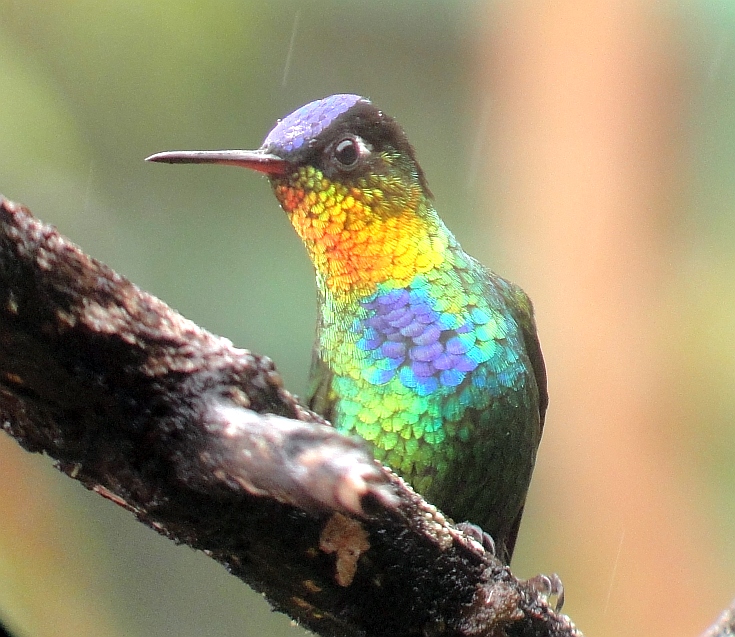Costa Rica is a popular destination, especially during the winter. Warm and pleasant weather instead of slushy driveways? Toucans, parrots, macaws, and manakins? Throw in a few dozen hummingbirds and it’s a sweet combination!

Although most birders visit Costa Rica in the winter, we also have a second, mini high season. That was this month, July. Yes, it’s summer in the northern hemisphere but no, it’s not hotter in Costa Rica. Time doesn’t work that way.
If anything, the cloud cover makes Costa Rica cooler today than the sun-drenched February and March! This second high season started happening a few years ago when bird tour companies realized that Costa Rica’s short wet season break could work for tours.
A stoppage of rain occurs most years, usually in the first two or three weeks of July. This makes for some easier birding and even if you can’t see the wintering birds from the backyard up north, everyone else is around. If you’re heading to Costa Rica soon, here’s some of what’s in store!
A Better Time for Some Birds?
July birding in Costa Rica is as good for resident species as the high season. For some birds, July may be easier.
This month and the rest of the rainy season looks better for wetland species like Masked Duck and Paint-billed Crake. Both of those sneaky birds are always around but in the summer, they’re not nearly as accessible.
Now is a good time to look for both species in the Ciudad Neily area.

July also marks the return of the Oilbirds! Yes, they are quite rare but if you walk around the Monteverde area at night, you might see one. Another good place to look for Oilbirds is Cerro Paraguas near San Vito. Maybe they live in that place all year round.
Last but not least, July is also a good time to study Austral migrants such as the Yellow-green Vireo, and Piratic and Sulphur-bellied Flycatchers.
weather
July may be dry but then again…maybe not! This is Costa Rica, a mountainous country that draws a large amount of moisture from two different oceans.
Hopefully, it won’t rain as much as other times of the year but honestly, in 2024, it’s hard to say what could happen. Warm waters in the Caribbean have already spawned one storm and more are likely to come.
Even though Beryl didn’t hit us, we still had heavy side effect rain that caused landslides and flooding. We can still get more; keep a close eye on weather advisories, be aware that landslides can close mountain roads, and flooding is very possible near lowland rivers.
Recently, the Pacific lowlands have been severely affected by flooding near Jaco, Parrita, Quepos, and near Ciudad Neily.
Some Birds to Watch for
Bellbirds are calling and mostly in their places in the mountains. Umbrellas are still in the cloud forest areas but some have moved into the foothill zones.
Other resident species are in their usual places although there may be more Green-fronted Lancebills and Black-bellied Hummingbirds in the foothill forests.

Do you see any large and funny Bank Swallows? Take pictures, you’re probably looking at the vagrant Brown-chested Martin!
Think you see a funky looking Purple Martin? Take more pictures, it could be another vagrant hirundine- the Southern Martin!
Do you still see Quetzals in Costa Rica?
In a word, “yes”. Many people ask when they can see quetzals in Costa Rica, or when is the best time to see them. For me, it’s any time of the year. Although many nest in March and April, the Resplendent Quetzal doesn’t exactly fly away.
Incredible birds are in Costa Rica all year round, you just need to bird the right habitat and sites.

A Great Time for DYI Birding in Costa Rica
July is also a good time for some DYI birding in Costa Rica. In other words, this is a great time to visit Costa Rica on your own. More vacancies, more elbows, and always more to see!
If you want to hire guides, there are also more available in July than in high season. To find birds, yes, eBird will give you some great ideas but don’t expect it to be the only option. Just remember, birds don’t live where people go eBirding, they live in places with the right habitat. To learn how to see more birds in Costa Rica and about hundreds of sites to see them, get “How to See, Find, and Identify Birds in Costa Rica”.
To prepare for your Costa Rica birding trip, don’t forget to bring a good field guide (I like Garrigues and Dean), and customize your target lists with the Costa Rica Birds Field Guide app.
As always, I look forward to seeing you in Costa Rica!


